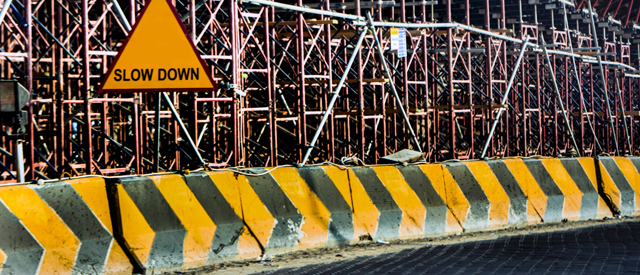
Ah, summer in Northeast Ohio. The season may be winding down, but construction will be going strong until the cold weather moves in. Of course, we all collectively groan when the orange barrels pop up along the routes of our commutes, but we engineers would like to reassure the public that we do our best to balance safety with minimizing the disruption to traffic in construction zones. We don’t like traffic jams either! Here’s a look at how we go about forming a Maintenance of Traffic Plan for a construction project that impacts roadways/highways: The primary function of temporary traffic control is to provide for the safe and efficient movement of vehicles, bicyclists, and pedestrians through or around temporary traffic control zones while reasonably protecting workers and equipment. The additional objective of the temporary traffic control is the efficient construction and maintenance of the roadway or highway. In conjunction with the Ohio Manual of Uniform Traffic Control Devices (OMUTCD), all temporary traffic control must conform to ODOT’s minimum standard for all traffic control devices used during construction, maintenance, and utility activities plus incident management. Every work zone situation is different, so several items must be considered in determining the traffic control needed. Questions that illustrate the major traffic control considerations include:
- What is the time duration of the work (Long-term, Short-term or Mobile)?
- Where is the work zone located (on the roadway, on the shoulder, or beyond the shoulder)?
- What type of roadway is involved?
- What is the speed of the traffic?
- What is the traffic volume on the roadway?
- Will the nature of traffic change while work is underway?
- Do the local law enforcement agencies need to be notified?
- What kind of signing will be required?
- Are cones, drums, barricades, or an arrow panel needed for traffic channelization?
- Will flaggers be required?
Depending on the answers to the above questions, the three main ways traffic is controlled through work zones are: temporary lane closures, reduced speed, and detours. When roadway projects include bridge and culvert replacement, or a major alignment and grade change is necessary, rerouting traffic with the use of detours is necessary. Detours are restricted to state routes due to commercial truck traffic and the use of nightly closures. Local Roads may be used when traffic use is restricted (i.e. no commercial trucks) and when nightly closures are not permitted. The control of road users through a temporary traffic control zone is an essential part of roadway/highway construction, utility work, maintenance operations, and incident management. We follow the following principles to assist road users and help protect workers in the vicinity of temporary traffic control zones.
- Road user and worker safety in temporary traffic control zones should be an integral and high priority element of every project from planning through design and construction.
- General plans or guidelines should be developed to provide safety for drivers, bicyclists, pedestrians, workers, enforcement/emergency officials, and equipment.
- Road user movement should be inhibited as little as practical.
- Drivers, bicyclists, and pedestrians should be guided in a clear and positive manner while approaching and traversing temporary traffic control zones and incident sites.
- Routine day and night inspections of temporary traffic control elements should be performed.
- Attention should be given to the maintenance of roadside safety during the duration of the temporary traffic control zone.
- Each person whose actions affect temporary traffic control zone safety should receive training appropriate to the job decisions each individual is required to make.
- Good relations should be maintained with all contractors involved in the work zone.
- All temporary traffic control devices shall be removed as soon as practical when they are no longer needed.
Ultimately it is the engineer’s responsibility to design a Maintenance of Traffic plan that follows the standard and care necessary to complete the construction work in a timely and safe manner. It is the contractor’s responsibility to erect, maintain and subsequently remove according to the engineer’s plan.
 This article was written by Senior Civil Designer Mike Christopher. Mike has over 26 years of
This article was written by Senior Civil Designer Mike Christopher. Mike has over 26 years of experience
preparing design and construction drawings for a variety of roadway, intersection, and infrastructure projects for ODOT, County Engineers, and municipalities.